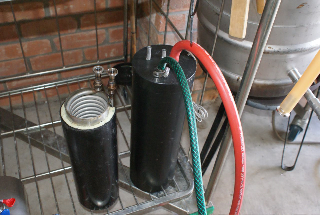AndrewQLD
RED ON WHITE IPA
- Joined
- 12/3/04
- Messages
- 4,149
- Reaction score
- 308
Andrew I am in the Process of making a Herms and the bottom is where I would like to put the element but that was exactly my concern, should it leak!
Why is it the most logical and practical solution always has a downside!
Interested to hear what people have done to reassure themsleves against this.
Woody
I made sure mine sealed good and tight Woodmac, then I applied sikaflex just to be sure.
Andrew









